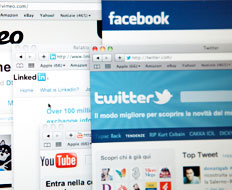The 30-second TV spot has been a staple of food-industry advertisers for decades, but its time is running short. And quick serves need to switch up the marketing menu—before it’s too late.
Why? The average TV advertisement, which is made up of 23 seconds of brand message and about seven of value proposition, just doesn’t lock in customer loyalty the way it used to. In fact, even the term customer loyalty needs to go. That’s marketing speak that makes individual customers look like cattle.
Faced with distracted customers who have access to 1,000 lunch options, discount dinner deals, and brands barking at them from every direction, quick serves need to find a new way to personally connect with and engage customers one on one—away from all of the noise.
Welcome to the age of the socially integrated brand campaign. Here’s why it’s set to change everything we know about the marketing mix in the quick-service food industry.
Changing the Mix: A Case in Point
Here’s a real example of what changing the mix can really do.
Last year, space150’s client, International Dairy Queen, celebrated the 25th anniversary of the DQ Blizzard treat with a nationwide Blizzard Tour. We were tasked with helping drive attention for the program and creating customer traffic for franchise locations across the country. In these instances, TV typically becomes the dominant medium, but, as a brand that likes to try new strategies, DQ agreed to mix mass market TV with a social media strategy to tap into the brand’s legions of loyal fans.
Fast forward to the campaign: A TV spot introduced DQ fans to a fictional family, the Blizzmans. The story of the Blizzmans was then carried over to online, where the real customer engagement happened on the Web and at DQ restaurants. Customers were able to view online webisodes that developed the family’s story and were offered free treats at local events when the Blizzard Tour arrived in their towns. Fans were asked to RSVP on Facebook, where they could learn more about the Blizzmans’ story and follow the progress of the Blizzard tour on its way to their town.
You might say, “So what?” Well, we learned a critically important lesson 3 million times over: When quick serves really engage their customers, the rewards can be massive. Integrating social media into a mass-media program in a key way has helped the DQ Fan Club on Facebook grow from 600,000 to 3.2 Million, and DQ has smashed nearly every record they ever set just with stand-alone, mass-media advertising. It’s a new horizon of customer engagement.
So what should savvy quick-serve marketers and brand managers take away about the changing times? Quite simply, seize new marketing opportunities. Social media platforms and invested online communities of fans can now add real firepower to a traditional marketing campaign and provide a level of customer involvement, ongoing feedback, and dialogue about your brand that didn’t exist five years ago.
The Recipe for Success
There are five new must-have ingredients for quick-serve social marketing success.
1. Go beyond TV: Your brand and restaurant’s success doesn’t start and end with TV. Take your content to new social media venues and let your customers get involved, interact with the content, and even create something new
2. Give fans a role: You may think your brand’s tweets, blogposts, and status updates are good, but they’re not nearly as good as what your fans have to say about you to their friends as they amplify your own marketing efforts
3. Engage fans (a lot): If you have a lot going on—events, promotions, discounts, and special deals—tell your customers about them, and often. So long as you have creative, fun, and valuable information they can value and use, it can be OK to post four, five, or even six times a day. It can help your brand grow quickly in the social world.
4. Stay smart and scrappy: You can use mostly free tools, like Facebook, Facebook Events, a WordPress blog, and a YouTube account, to drive millions of impressions inexpensively and quickly. In the old days of the brand microsite, that would be a seven-figure investment.
5. Use social ads as growth catalysts: Paid media like Facebook, Twitter, and YouTube ads are a great catalyst in social media when combined with all of the above—but they don’t work in a vacuum. You can see substantial growth from a Facebook ad program, but it will only be a fraction of what your fans can drive if they are properly engaged and on board with your brand.
Keep these ingredients in mind when looking for ways to add flavor and sizzle to your marketing campaigns, and it’s entirely possible you’ll cut your promotional overhead and create a new army of brand-loyal fans to spread your word and stretch your marketing dollars.











